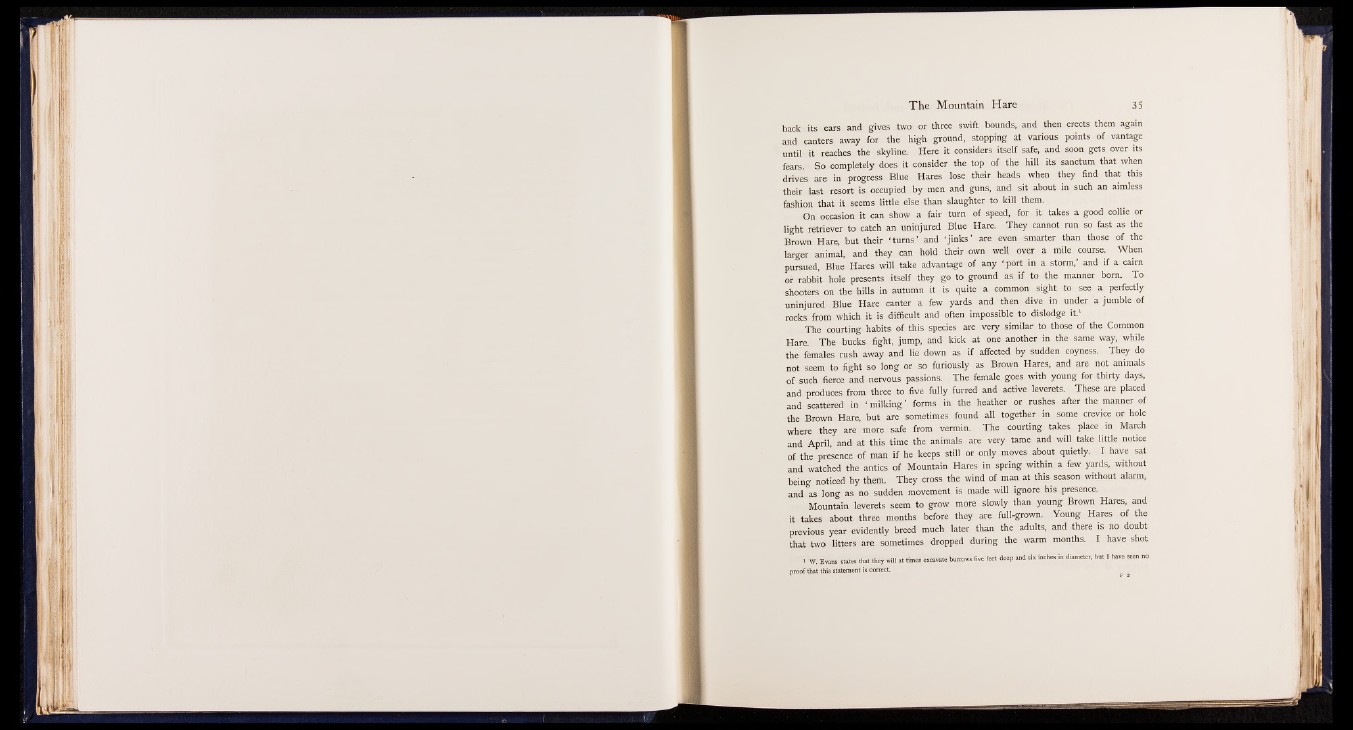
back its ears and gives two or three swift bounds, and then erects them again
and canters away for the high ground, stopping at various points of vantage
until it reaches the skyline. Here it considers itself safe, and soon gets over its
fears. So completely does it consider the top of the hill its sanctum that when
drives are in progress Blue Hares lose their heads when they find that this
their last resort is occupied by men and guns, and sit about in such an aimless
fashion that it seems little else than slaughter, to kill them.
On occasion it can show a fair turn of speed, for it takes a good collie or
light retriever to catch an uninjured Blue Hare. They cannot run 50 fast as the
Brown Hare, but their ‘ turns’ a n d S n k s ’ are even smarter than those of the
larger ™i.n=d and they can hold their own well over a mile course. When
pursued, Blue Hares; will take advantage of any ‘ port in a storm,’ and if a cairn
of rabbit hole presents itself they go to ground as if to the manner born. To
shooters on the hills in autumn it is quite a common sight $», see a perfectly
uninjured Blue Hare canter a few yards and then dive in under a jumble of
rocks from which it is difficult and often impossible to dislodge it.1
The courting habits of this species are very similar to those of the Common
Hare. The bucks fight, jump, and kick at one another in the same way, while
the females rush away and lie down as if affected by sudden coyness. They do
not seem to fight so long or so furiously as Brown Hares, and are not animals
of such fierce and nervous passions. The female goes with young for thirty days,
and produces from three to five fully furred and active leverets. These are placed
and scattered in ‘ milking’ forms in the heather or rushes after the manner of
the Brown Hare, but are sometimes found all together in some crevice or hole
where they are more safe from vermin. The courting takes place in March
and April, and at this time the animals are very tame and will take little notice
of the presence of man if he keeps still or only moves about quietly. I have sat
and watched the antics of Mountain Hares in spring within a few yards, without
being noticed by them. They cross the wind of man at this season without alarm,
and as long as no sudden movement is made will ignore his presence.
Mountain leverets seem to grow more slowly than young Brown Hares, and
it takes about three months before they are full-grown. Young Hares of the
previous year evidently breed much later than the adults, and there is no doubt
that two litters are sometimes dropped during the warm months. I have shot
t W. Evans states that they »ill at times excavate barrows live feet deep and six inches in diameter, but I have seen no
proof that this statement is correct.